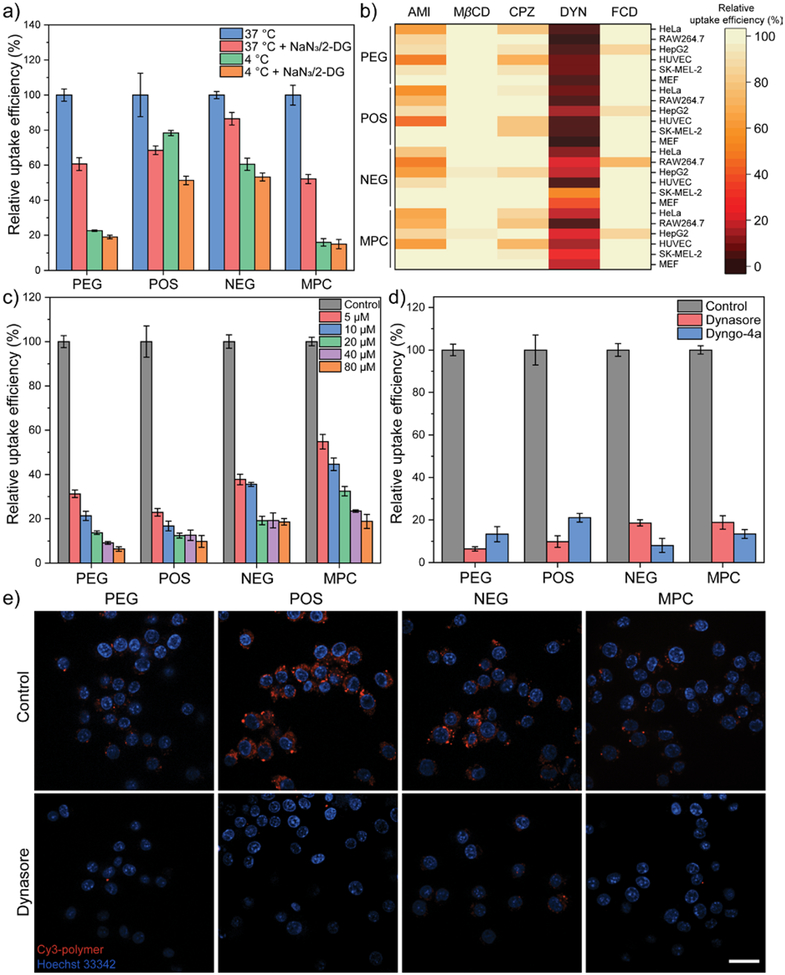Figure 2.
(a) Cellular uptake efficiency of amphiphilic polymers after 3 hours in HeLa cells at low temperature and ATP depletion conditions (NaN3/2-DG treatment). N = 4. 2-DG, 2-deoxy-D-glucose. (b) Cellular uptake efficiency of amphiphilic polymers after 3 hours in the presence of pharmacological inhibitors. The evaluation was performed in six different types of cell: HeLa, RAW264.7, HepG2, HUVEC, SK-MEL-2, and MEF. Each data was collected from the mean value of four replicates. AMI, amiloride. MβCD, methyl-β-cyclodextrin. CPZ, chlorpromazine. DYN, dynasore. FCD, fucoidan. (c) Cellular uptake efficiency of amphiphilic polymers after 3 hours in HeLa cells upon the treatment of different dynasore dosage. N = 4. (d) Comparison of dynasore and Dyngo-4a on the cellular uptake efficiency of amphiphilic polymers in HeLa cells. N = 4. (e) Confocal microscopic images of Cy3-labelled amphiphilic polymers in RAW264.7 cells with or without the presence of dynasore. The scale bar in each figure represents 20 μm. In each figure, error bars represent the standard deviation of replicates.

